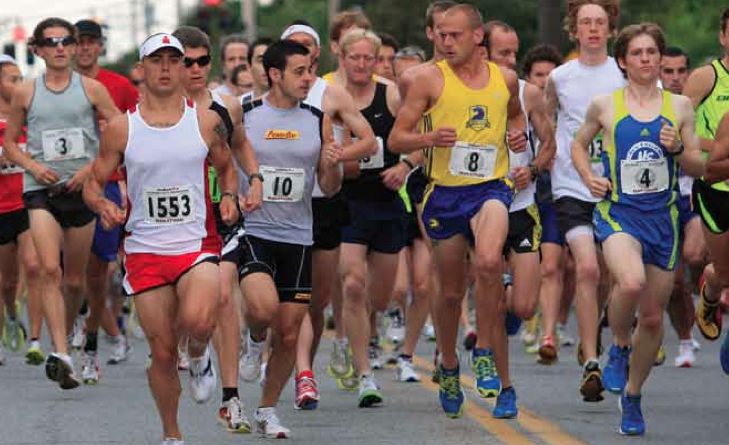Silver Laces | Burlington’s Much-Loved KeyBank Vermont City Marathon Turns 25
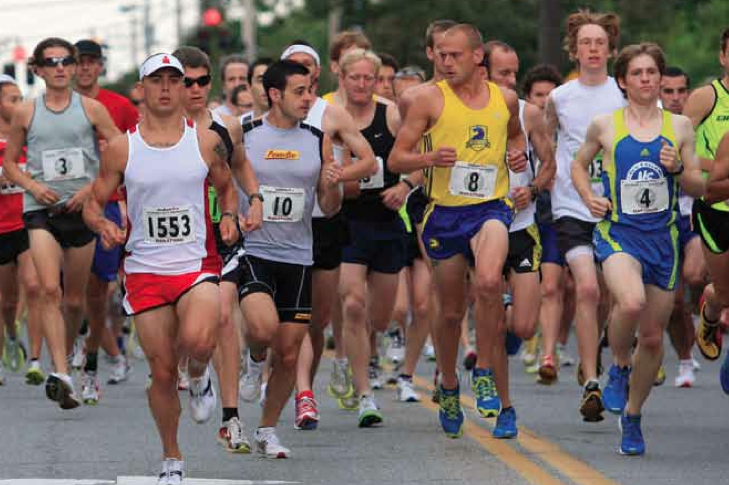
It was 2001, and the two-person relay was only an idea on drawing boards of KeyBank Vermont City Marathon organizers—today known as RunVermont. But my then-roommate Craig Benson wanted to run the five-leg VCM as a two-person team. Benson took the first three relay legs (that is, 15 miles), leaving me the last two legs—including the “glory” leg, whereby I finished to the cheers of thousands of marathon spectators on my way to the finish line at Waterfront Park.
After my run, I noticed two lines at the refreshment tent—one for full marathoners and one for relay participants. Making my way through, I saw there was a pile of chocolate-chip cookies on the side for full marathoners, while relay runners got peanut butter cookies (of which I’m not a fan).
I flagged a volunteer—an elderly woman who took her job seriously (maybe overly so). “Excuse me,” I said. “Could I please have chocolate chip?”
She looked at me in my relay line and then looked at the cookie pile on the other side. “You want those cookies?” she said. “You run the full marathon!”
I didn’t argue. Nor did I forget. Four years later, I trained for what I planned to be my one and only marathon—and to collect my cookie. In 2005, I completed the Vermont City Marathon. Something else happened too: I was so captured by the spirit of the event, the cheers of spectators, and the support of my family and friends, that I forgot my plan to run just one marathon and get on with my life.
This year I will run my 16th marathon and my 9th consecutive VCM. It’s official—I was hooked from day one.
Signs of Summer
In Burlington, Vermont, nothing screams that summer is coming like the annual running of the KeyBank Vermont City Marathon. The event is less a running race than a celebration of health, fitness, and the coming season. Every year on the Sunday of Memorial Day weekend—that’s May 26 this year—more than 7,000 runners, 1,700 volunteers, and an estimated 30,000 spectators turn out.
Joe Connelly, technical coordinator of the marathon since 2004, participated in the very first Vermont City as one of 525 full marathoners after having an indirect hand in helping to develop the original course. “I trained with many of the original organizers,” Connelly says. The course went through several iterations before organizers settled on the current “clover leaf” format with the start at Battery Park and finish at Waterfront Park.
Connelly remembers one training run with VCM’s first race director Gordon MacFarland. “I let him talk me into running the Beltline,” Connelly says, referring to the local name for Route 127. While most of the scenic VCM course leads runners through Burlington’s downtown, through neighborhoods, or along the lake, the exception, from the beginning, has been an out-and-back on the Beltline.
At no place on the marathon course is the growing running community and the special camaraderie of Vermont City more apparent than on the Beltline. Every runner on the course—from the sub-2:30 invited marathoners to the most casual Leg 2 relay runner—passes one another on the Beltline. Recreational runners on their way out cheer the leaders heading back, and friends shout encouragement back and forth.
The Evolution of a Race
By the time the VCM turned five, organizers realized that it needed full-time attention. Andrea Sisino served as the executive director of RunVermont for 15 years. “Back then,” Sisino said, “running was simpler.” Draw a start line, a finish line, set out a few water tables, and you have a race. “These are more complicated times.”
Under her watch, VCM added the two-person relay, while RunVermont expanded to become much more than just a marathon organizer. Today, RunVermont operates vibrant youth running programs, it works for other outfits (like putting together the Age Group National Championships with USA Triathlon), and it holds other race events like the Vermont Half-Marathon Unplugged, First Run, and the Yam Scram for kids on the Saturday of marathon weekend. As many kids will finish the youth event in 2013 as marathoners finished the first VCM in 1989.
The decision to hold a relay—one of the first marathons to do so—separated Vermont City from the very first year. “That’s part of what makes it a ‘Vermont’ event,” said Peter Delaney, RunVermont’s executive director and Sisino’s successor. Seventy-five percent of relay participants are Vermonters.
Meanwhile, running has exploded nationwide. “A lot more people know how to prepare for an endurance event,” Delaney said. Average finishing times for the Vermont City were between three and four hours in the ‘90s. “Now they’re four to four-and-a-half,” he said. “People are running not so much for time as they are to complete the distance.”
Regardless of what motivates runners to line up at the VCM start at the top of Battery Street, they will experience the energy of a community that goes marathon-crazy on Memorial Day weekend. “What has not changed,” Delaney said, is the enthusiasm, love, and support that this community has shown for this event since the beginning.”
He’s right. I noticed it during my first chocolate-chip cookie-earning race in 2005—from families holding marathon-cheering parties in their yards with children banging buckets with wooden spoons like little Taiko drummers to the thousands of cheering spectators lining Church Street and the hill on Battery. Thank you Burlington and RunVermont; I have felt your energy eight years in a row, and I look forward to experiencing it this year —and for many years to come.
—
We asked local runners, “What’s your favorite VCM memory?”
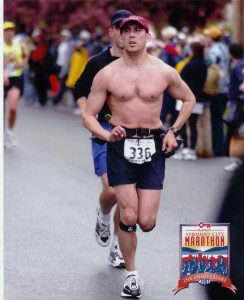 Derek Punt, Colchester
Derek Punt, Colchester
Full VCMs: 8
Five-person Relays: 10
“The walk up Depot Street after the race. The excruciating soreness is so unique; it’s what tells you just ran 26.2 miles.”
Kristen Courcelle, Colchester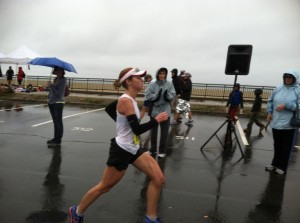
Full VCMs: 7
Two-person team: 2
The 2004 VCM was my first marathon, and it was on my birthday. Other runners sang to me—twice!—and my dad, husband, and friends ran various legs with me.
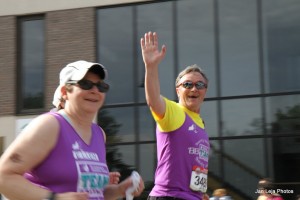 Jan Leja, Shelburne (Vermont Team in Training Coach)
Jan Leja, Shelburne (Vermont Team in Training Coach)
Full VCMs: 14
“I’ve always taken great pleasure in running in with our first-time marathoners. The moment of their triumph is priceless.”
Newton Baker, Montpelier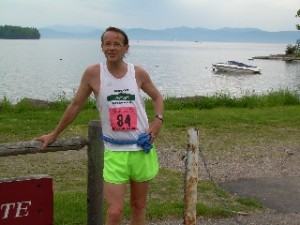
Full VCMs: 24 (All of them!)
Five-person relay: 10
“I became the first Vermonter to run 100 marathons, and I did it on my home course—VCM—in 2004. The race committee generously helped to get my parents, stroke victims who had never seen me run a marathon, in the VIP tent in wheelchairs at the finish line.”
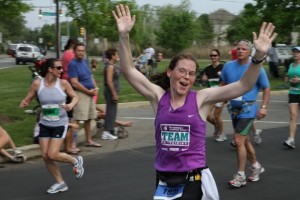 Rebekah Thomas, West Bolton
Rebekah Thomas, West Bolton
Full VCMs: 12
Two-person team relays: 2
Five-person relays: 12
Years as a volunteer: 12
“I ran my first VCM with Team in Training. Also, volunteering at race pick-up each year rounds out the marathon experience and gives me a greater appreciation for the community effort necessary for a successful event.”
Marty Courcelle, Colchester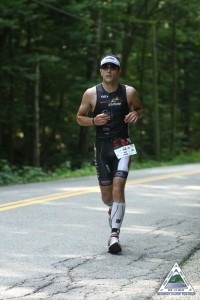
Full VCMs: 4
Two-person teams: 3
Five-person relays: 2
“I started too fast at my first VCM and was walking by the time I reached the bike path. Three friends caught up and dragged me to the finish even though they could have beat 4 hours by ditching me.”

